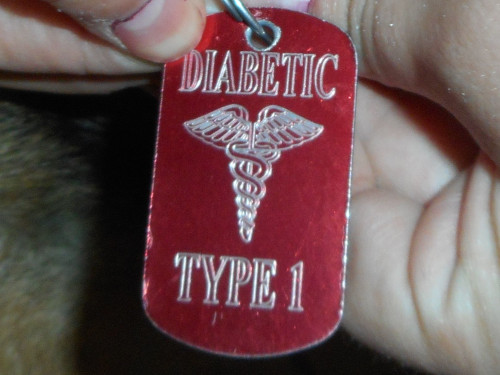 Type I diabetes – most common in dogs – occurs when the pancreas is incapable of producing or secreting adequate levels of insulin. This is also called insulin-dependent diabetes. Obese dogs and female dogs may run a greater risk of developing diabetes later in life (6-9 years of age). Some breeds may also run a greater risk, including Australian terriers, schnauzers, dachshunds, poodles, keeshonds and samoyeds. Juvenile diabetes is particularly prevalent in golden retrievers and keeshonds. Type II diabetes is a lack of normal response to insulin. Diabetes most typically occurs in older dogs or cats. Cats with diabetes may develop ‘dropped hocks’ – a weakness of their muscles that causes them to walk on their hocks (heels) instead of their toes.
Type I diabetes – most common in dogs – occurs when the pancreas is incapable of producing or secreting adequate levels of insulin. This is also called insulin-dependent diabetes. Obese dogs and female dogs may run a greater risk of developing diabetes later in life (6-9 years of age). Some breeds may also run a greater risk, including Australian terriers, schnauzers, dachshunds, poodles, keeshonds and samoyeds. Juvenile diabetes is particularly prevalent in golden retrievers and keeshonds. Type II diabetes is a lack of normal response to insulin. Diabetes most typically occurs in older dogs or cats. Cats with diabetes may develop ‘dropped hocks’ – a weakness of their muscles that causes them to walk on their hocks (heels) instead of their toes.
Symptoms of diabetes can be:
- Change in appetite
- Increase in water consumption (polydipsia)
- Weight loss
- Increased urination (polyuria)
- Unusually sweet-smelling or fruity breath
- Lethargy
- Dehydration
- Urinary tract infections
- Vomiting
- Cataract formation, blindness
- Chronic skin infections
In order to properly diagnose diabetes, Doctor Neumeister will speak to you about your observations and perform a physical examination including blood work and a urinalysis. If diabetes progresses without being treated it can cause coma and death.
Once your pet is diagnosed, Dr. Neumeister will schedule a “serial blood glucose–concentration curve”, during which we measure glucose levels repeatedly over many hours. The results will help Dr. Neumeister choose an appropriate insulin, dose and dosing schedule. After treatment starts, your pet will need to be routinely tested to see how well the protocol is working. Each pet responds differently to treatment, therefore treatment must be tailored to each pet throughout its life. Treatment depends on the symptoms’ severity, the lab work results, and general health issues.
Some pets may respond to oral medication and a high-fiber diet to normalize glucose levels in the blood. In most cases, insulin injections are necessary for adequate regulation of blood glucose. It’s important to give your pet insulin at the same time every day and feed him regular meals in conjunction with the medication. This allows increased nutrients in the blood to coincide with peak insulin levels and will lessen the chance that sugar levels will swing either too high or too low. Regular blood glucose checks are a critical part of monitoring and treating any diabetic patient. In addition, Dr. Neumeister can also show you how to perform glucose tests at home.
Sources:
http://www.cat-dog-diabetes.com/
https://www.aspca.org/pet-care/dog-care/diabetes
Blackwell’s Five-Minute Veterinary Consult: Canine and Feline, Fifth Edition, Larry P. Tilley and Francis W.K. Smith, Jr. © 2011 John Wiley & Sons, Inc.
